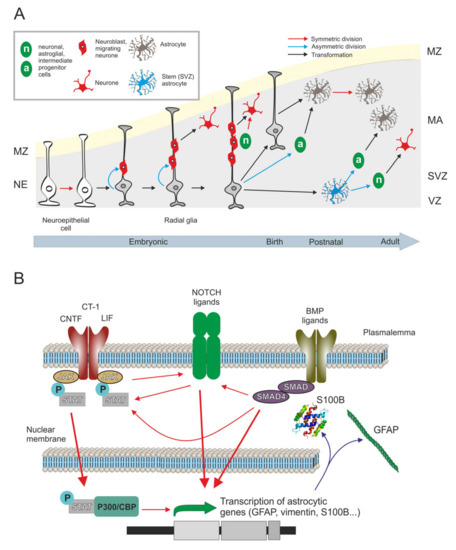

Long interspersed nuclear elements (LINEs) form part of the repeat sequences spread throughout DNA. For example, a recent article shows that, in mice, neuronal activity and hence the synthesis of ATP and reactive oxygen species are accompanied physiologically by the formation of double-stranded DNA breaks, which are rapidly repaired in wild-type mice, unlike in J20 mice, which are an Alzheimer's disease model (Suberbielle et al., 2013).

Reactive oxygen species may induce single-stranded and double-stranded (DSB) DNA breaks, thereby activating DNA damage response systems (O'Sullivan and Karlseder, 2012 Marteijn et al., 2014). Oxidative stress, which mimics accelerated aging, generates reactive oxygen species (ROS) which are toxic, in particular in terms of the genome, where the chromatin proteins and the DNA bases are subjected to oxidation (Vijg, J., and Suh, Y., 2013). This suggests that aging makes the cells more sensitive, even if the mutations themselves accelerating this aging cannot be ruled out. This is true of both their sporadic and genetic forms, as is illustrated by Parkinson's disease, Alzheimer's disease and even the monogenetic Huntington's disease. No difference between protein isolated from purified nuclei and whole brain extract on immunoblots has been found (Mullen et al., 1992).The present invention relates to the use of a reverse transcriptase inhibitor in the prevention and treatment of degenerative diseases.Ī characteristic of most degenerative diseases, in particular neurodegenerative diseases, is that they manifest late in life.

Strong nuclear staining suggests a nuclear regulatory protein function however, no evidence currently exists as to whether the NeuN protein antigen has a function in the distal cytoplasm or whether it is merely synthesized there before being transported back into the nucleus. Immunoreactivity appears around E9.5 in the mouse neural tube and is extensive throughout the developing nervous system by E12.5. Immunohistochemically detectable NeuN protein first appears at developmental timepoints that correspond with the withdrawal of the neuron from the cell cycle and/or with the initiation of terminal differentiation of the neuron (Mullen et al., 1992). NeuN protein distributions are apparently restricted to neuronal nuclei, perikarya and some proximal neuronal processes in both fetal and adult brain although, some neurons fail to be recognized by NeuN at all ages: INL retinal cells, Cajal-Retzius cells, Purkinje cells, inferior olivary and dentate nucleus neurons, and sympathetic ganglion cells are examples (Mullen et al., 1992 Wolf et al., 1996). NeuN antibody (NEUronal Nuclei clone A60) specifically recognizes the DNA-binding, neuron-specific protein NeuN, which is present in most CNS and PNS neuronal cell types of all vertebrates tested.


 0 kommentar(er)
0 kommentar(er)
